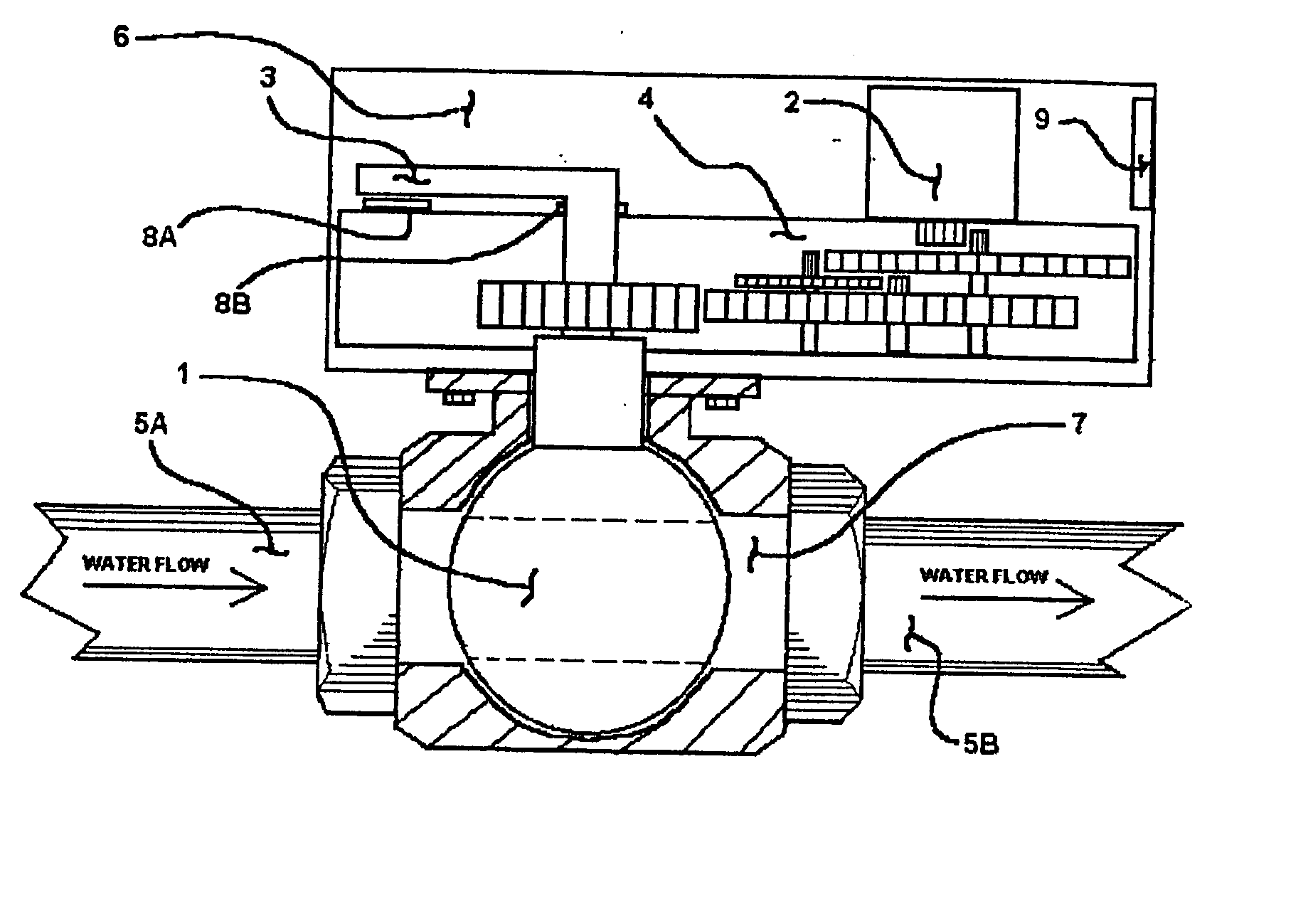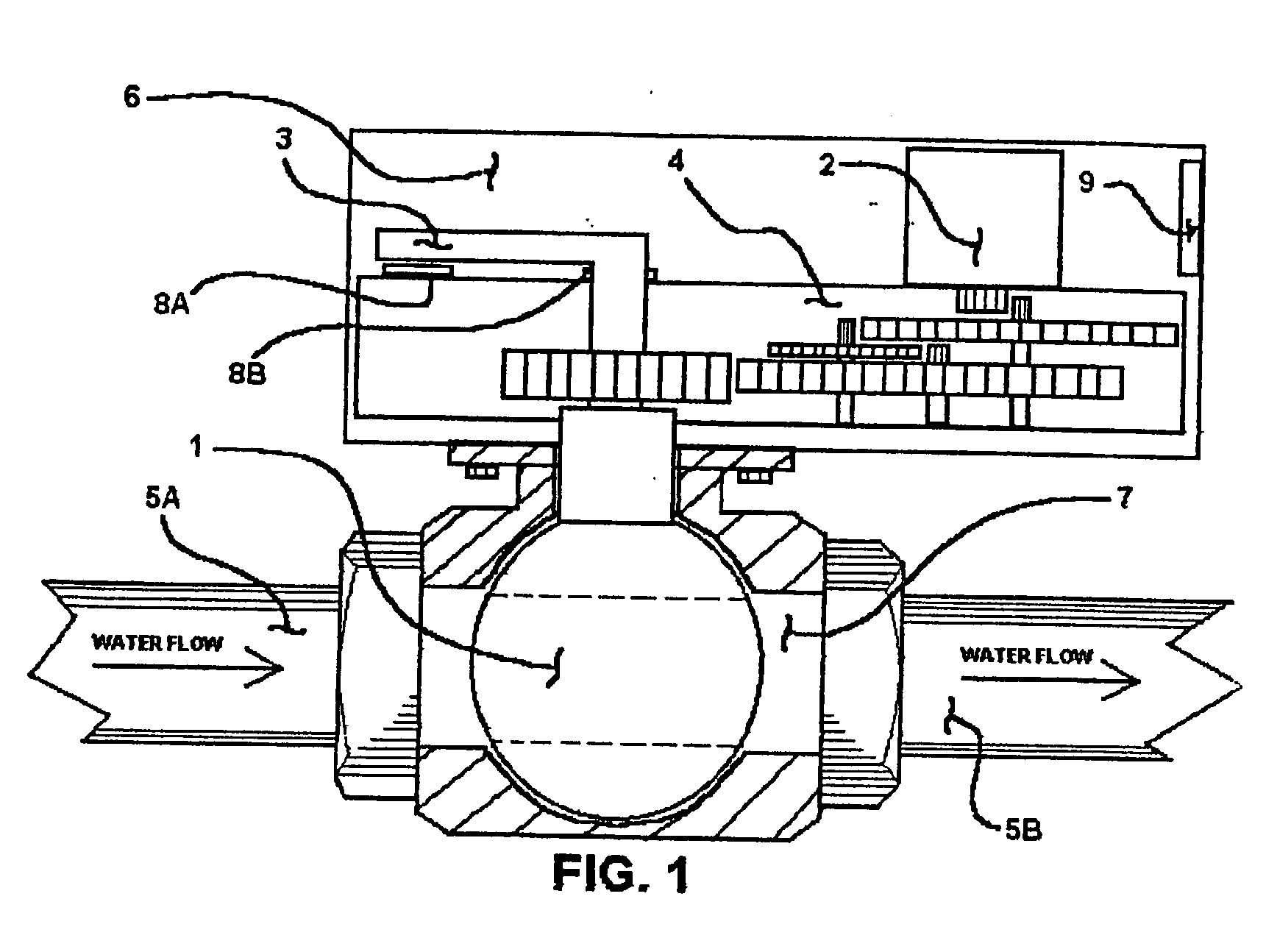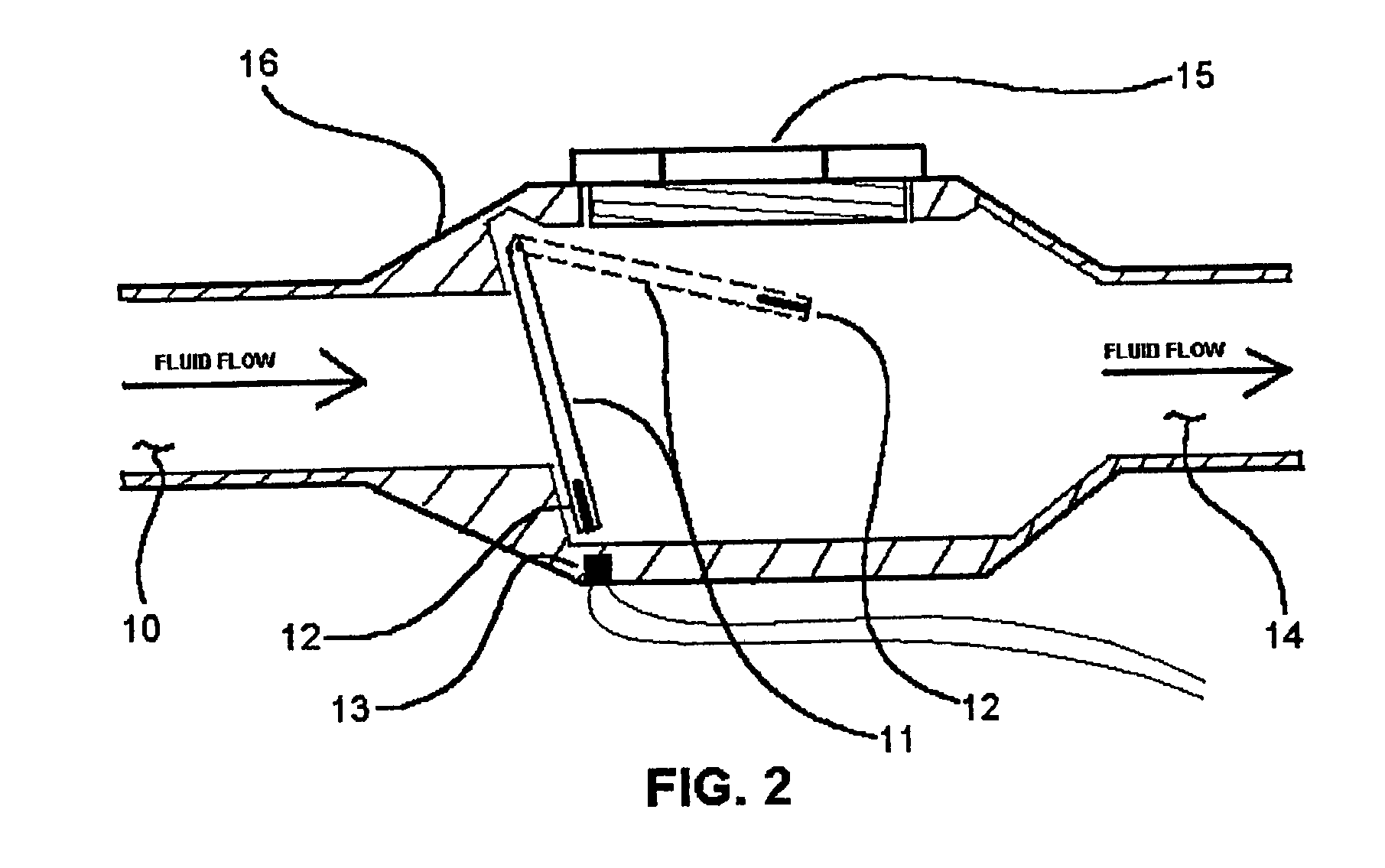Conductive fluid leak detection system & automatic shut off valve
a technology of conductive fluid and detection system, which is applied in the direction of fluid-tightness measurement, instrumentation, and fluid detection at the leakage point, etc., can solve the problems of conductive fluid leakage from broken water lines in houses or buildings, damage that exceeds several thousand dollars, and can be extensive, so as to achieve the effect of reducing the leakage of conductive fluid
- Summary
- Abstract
- Description
- Claims
- Application Information
AI Technical Summary
Benefits of technology
Problems solved by technology
Method used
Image
Examples
example 1
[0063] In FIG. 4 thereby passing through the faucet's in-let 32A and on through to the faucets out-let 32B, and through the isolating adapter 33, which holds the aerator, and isolates the main water supply line from the corrosive resistant, conductive connecting washer 34, which is designed to slide over the isolator, having an A.C. signal attached to it, and to remain in place, and the corrosive resistant, conductive end cap 35 which is designed to be removed and replaced without disconnecting the A.C. signal that is connected to corrosive resistant, conductive connecting washer 34, because the corrosive resistant, conductive end cap 35 holds the clean out screen for easy screen clean out. When screwed on tightly, it makes contact with the corrosive resistant, conductive connecting washer 34, also making the corrosive resistant, conductive end cap 35 connected to the A.C. signal. It also incorporates a cross section member for insurance that water cannot pass through it without tou...
example 2
[0064] In FIG. 5, thereby passing through the shower head sensors in-let 36 which is also connected to the A.C. signal running through the main water supply line therefore also sending the A.C. signal through it, and on through the non-conductive isolator 37, which has a water chamber, and a water escape hole, which is plugged by the non conductive water stop 39, which is held into place with a spring 40, thereby stopping the water from moving forwards through the escape hole of the non conductive isolator 37 when the water is not being requested from that location. If water is being requested from that location, then the water would push the water stop 39 forwards, thereby allowing water to escape from the first non conductive isolator 36, and into the second non conductive isolator 41, which has a, that slides over the second non conductive isolator 41, and is also connected to the A.C. signal 42. The water would then go on through the showerhead, and onto the waste pipe. When the...
PUM
 Login to View More
Login to View More Abstract
Description
Claims
Application Information
 Login to View More
Login to View More - R&D
- Intellectual Property
- Life Sciences
- Materials
- Tech Scout
- Unparalleled Data Quality
- Higher Quality Content
- 60% Fewer Hallucinations
Browse by: Latest US Patents, China's latest patents, Technical Efficacy Thesaurus, Application Domain, Technology Topic, Popular Technical Reports.
© 2025 PatSnap. All rights reserved.Legal|Privacy policy|Modern Slavery Act Transparency Statement|Sitemap|About US| Contact US: help@patsnap.com



